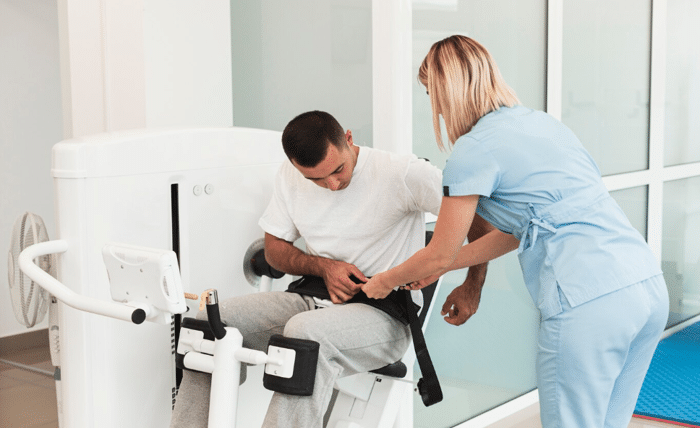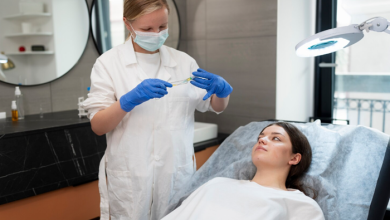
In the humming halls of every hospital, there’s a kind of heroism that rarely makes headlines. It’s not always in the drama of emergency rooms or the triumph of successful surgeries—it’s in the everyday strength of the nurses, physiotherapists, and healthcare assistants who physically carry the weight of care. Sometimes quite literally. These quiet heroes lift patients out of beds, help them stand after surgery, and reposition them when they can’t move themselves. But this physical labour—noble as it is—can come at a steep cost. Fortunately, there’s an unsung champion stepping in to share the load: hospital patient lifting equipment.
Hospital patient lifting equipment may not wear capes, but it saves caregivers’ lives every day. From ceiling-mounted hoists to portable floor lifts and sit-to-stand aids, these machines don’t just move patients; they move the needle on what’s possible for caregiver safety and dignity. It’s time we spotlight how this equipment does more than lift bodies—it lifts burdens, prevents injuries, and keeps hospitals running at their best.
Behind Every Lift is a Story
Imagine a nurse named Lucy. She’s worked in the geriatric ward for over a decade. She knows every patient by name, their favorite tea, and how they like their pillows arranged. But one day, while helping a frail patient from bed to wheelchair, she feels a sharp pull in her back. A week later, she’s off work, in pain, and unsure when she’ll return. Unfortunately, Lucy’s story is far from rare.
According to workplace health statistics, hospital staff suffer some of the highest rates of musculoskeletal injuries, especially from repetitive lifting and repositioning tasks. These aren’t one-off accidents—they’re slow, creeping injuries that build up over years of lifting more than a body should bear. When someone like Lucy is forced to step back from her job, the ripple effects go beyond one empty shift. Patients lose a trusted face, colleagues are stretched thinner, and morale takes a hit. But what if we could rewrite Lucy’s story?
Enter: hospital patient lifting equipment.
Lifting More Than Weight: A Human-Centered Innovation
What makes hospital patient lifting equipment so powerful isn’t just the mechanics and mindset. These tools are engineered not only to reduce physical strain but to preserve the dignity of everyone involved. When a ceiling hoist or floor lift glides a patient effortlessly from bed to bath, no one grunts, strains, or fears injury. The caregiver is calm, the patient feels secure, and the transfer becomes an act of grace instead of grit.
There’s artistry in a well-handled lift, just as in a perfectly wrapped bandage. But that kind of care should never cost a caregiver their back, health, or career. Investing in these devices is not just a clinical upgrade—it’s a philosophy of respect for those who give their all.
The Price of Pain (and the Value of Prevention)
Let’s talk money—because hospitals, after all, must run sustainably. Every time a staff member is injured while lifting a patient, the hospital faces an avalanche of costs: workers’ compensation claims, staff shortages, temporary hires, lost productivity, and increased insurance premiums. These expenses add up quickly. In Australia and beyond, a single manual handling injury can cost tens of thousands of dollars, not to mention the human cost of chronic pain or forced retirement.
Compare that with the cost of purchasing hospital patient lifting equipment, often less than the fallout of even one serious injury. The math is simple, yet powerful. Every injury prevented means fewer sick days, fewer staffing crises, and more time spent doing what matters: caring.
But beyond the numbers lies a more profound truth. When hospitals invest in lifting equipment, they’re not just buying machines but peace of mind. They’re telling their staff, “Your wellbeing matters. Your safety is worth every cent.”
Happier Staff, Healthier Hospitals
A hospital is more than walls and wires—it’s a living system, kept alive by the energy of its people. And when that energy is drained by pain, stress, or injury, the whole system suffers. On the other hand, when caregivers feel supported—physically and emotionally—they thrive. They stay longer. They bring their entire selves to work. And that benefits everyone, from the ICU to the front desk.
Hospital patient lifting equipment plays a quiet but crucial role in that equation. It creates an environment where healthcare professionals feel secure in their roles. It removes the fear of “just one wrong move.” It reduces burnout, boosts morale, and strengthens the bond between caregiver and patient.
There’s something powerful about nurses who know they won’t go home limping at the end of their shift. Or a support worker who no longer dreads that call to Room 312 because the lift makes the transfer effortless. These small victories stack up—and over time, they build a culture of care that extends to everyone who walks through the hospital doors.
A Safer Future is a Smarter One
The future of healthcare isn’t just about high-tech surgical robots or AI-powered diagnostics. Sometimes, it’s about the tools that make daily care safer, smoother, and more sustainable. Hospital patient lifting equipment is part of that future. Already, we’re seeing innovations like remote-controlled lifts, voice-guided hoists, and sensor-embedded slings that adjust based on patient weight.
But hospitals don’t need to wait for the next big breakthrough to make a difference. The technology already exists. What’s needed now is the will to prioritise it—to see these machines not as luxuries but as standard tools of a compassionate workplace.
And it’s not just hospitals that benefit. Patients do too. Because when a caregiver isn’t worried about injuring themselves, they can focusentirelyy on the human being in front of them. Every lift becomes an opportunity to make someone feel safe, seen, and supported.
Final Thoughts: The Lift We All Need
We often hear about how hospitals are places of healing. But healing can’t happen without healers. And those healers need support—physically, emotionally, and structurally. Hospital patient lifting equipment from CHS Healthcare represents one of the most thoughtful investments a hospital can make. It protects the people who protect us. It prevents pain, saves money, and cultivates care that flows in every direction.
So the next time you pass a hoist quietly doing its job, know it’s lifting more than a patient. It’s lifting a caregiver’s future. It’s lifting a hospital’s standard of care. It’s lifting all of us, one safe transfer at a time.




